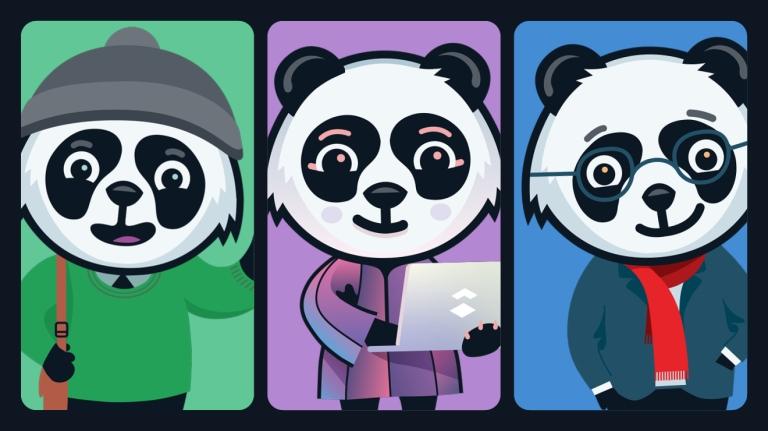I am very excited to share with you this first investigation into key academic topics in my expanded role as Chief Academic Officer at Instructure. Many of you know me as our Chief Customer Experience Officer, where I lead all customer success, services, and support interactions you have in partnership with us. That said, I was recently invited by our CEO to also lead our academic strategy. This is particularly exciting for me as I have spent my entire career focused on the teaching and learning side of educational technology.
One key role I have played throughout that journey is as a teacher, most recently in a program at the University of California, Irvine, focused on eLearning design and development. As I looked to refresh that course, I knew I wanted to dig deeper into the worlds of gamification and generative AI, especially where those two collide, and I needed the student view to do this well. Enter Simon Kaminer, an intern and senior in high school. He has done a fantastic job surveying the landscape and applying his own lens to the educational opportunities behind both gamification and generative AI. Read on to hear his perspective on this prompt: “What are the key themes you see emerging from a research and application perspective in gamification and generative AI? What feels most relevant to you, as both a high school student on his way to college and an active learning consumer of both gamification and AI.”
Simon’s View
As part of my research project, Melissa asked me to research technological advances in education and how they impact learning — something I was not super familiar with. As I read about themes in gamification and AI, these practices seemed like a great way to learn! If only my school made calculus class like an Xbox game. In my research, I learned about new technologies that we use in our everyday world. I believe that education is a perfect place for teachers to implement these new technologies. I believe it will improve learning and interactions between teachers and students. I am excited to share with you what I found. Read on to learn more.
Can AI personalisation revolutionise learning?
Yes, using AI in education can change the way we learn. AI personalisation allows courses to be tailored specifically to individual students. While a large class might be hard to keep track of every student's learning style, implementing AI and data in coursework can help to keep students on track. This article from Stanford notes that there are multiple uses of AI in learning. Dora Demszky, Assistant Professor of Education Data Science, says that AI can help teachers to obtain a better grasp of classroom dynamics, which will allow educational practices to be personalised student by student. How the students interact with the work they are given can help teachers to plan lessons. A chatbot integrated into classwork can analyze how students speak and interact and obtain further patterns from that data.
How does gamification use incentives to help students learn?
Integrating a points system with multiple awards and achievements that students can earn is key to making learning fun and engaging. Busywork that seems to have no purpose might bore students and disincentivizes them to do the work. Adding reasons to complete work that are tangible, at least online, will help motivate students to do their work. For example, Duolingo provides users with video game lives, knocking off a heart every time a mistake is made. Running out of hearts disables your ability to take lessons until they are refilled. Because of this, students aim to focus more on the material given to them. Take Khan Academy, for example: teachers can set up classes and have students work towards a common goal for points that are accumulated as more and more questions are answered correctly. My 10th grade math class loved that feature, but a prize at the end would have been better!
What is “Real Time Feedback” from AI, and how will it support e-learning?
AI is a computer, enabling it to do what human teachers cannot — work around the clock. An AI agent learns from the data it is given, so being available 24/7 to connect data, from multiple students at once, gives it an accessibility that teachers do not have. AI can instantly grade essays and pieces of abstract writing that would otherwise be unable to grade instantly. The natural language input the AI is given strengthens its use of the English language, making it better at analysing “right brain things” of subjectivity. However, I’ve been down the route of trying to have GPT write my English paper — it does not work very well. AI can help students like me come up with some creative ideas and teachers to even check their students work, but it isn’t the end all be all and should not be relied on to replace a student’s own work.
How can educators utilise learning analytics provided with online education methods?
When students complete courses in an online format, there are certain metrics that are able to be measured for use by the teacher. For example, a math website such as Delta Math or Khan Academy can detect how long on average it took a specific student to solve a specific type of question, which the software can then round up to present to the teacher as a demonstration of the student's capabilities in different types of problems. The implementation of AI in these online learning services, as lead writer on AI Matthew Lynch writes in this article, could be instrumental to better-informed decisions for teachers when interpreting the data from their students.
How can real-world applications in gamified learning aid students?
Picture this: You are in a business class taking a course on management and economics. The integration of some sort of business management game into the course can boost learning in a fun way and make it easier to understand. For example, one could manage funds and allot money into areas they see fit without any actual repercussions. Additionally, being able to change learning from a boring, sit-down lesson to a practical online example that effectively showcases the themes taught in the lesson is an important way to engage students. While gamification can be useful for keeping students engaged, it is also practical for explaining complex real-world concepts in a teach-yourself kind of way.
What are gamification’s benefits for different and disabled learners?
For some students, sitting still in one place and engaging with other students can be hard. It is not always in every student’s best interest to be seated for six hours a day, learning from a textbook. Gamification provides the ability to teach students in a different, new, exciting type of way that can be tailored to their needs. The way gamifying learning literally implements games into the learning is important to keeping students engaged and active, giving them a reason to love learning while practical teaching makes this hard.
AI and Gamification are two powerful tools for learners and teachers, and utilising them to their fullest extent is imperative for youth to be educated to their fullest potential. AI as a human-like computer is able to drive data and analytics in ways like never before, helping teachers to teach their students with maximum knowledge and efficiency. Besides this, AI is able to act as a teacher itself, helping students to sift through coursework to find the notes they need and grade language-based assignments in record speed that would otherwise take a human teacher hours to grade.
Gamification is equally as important and promising as AI, signifying a new way to approach traditional education that makes the classroom more accessible and fun for all that inhabit it. The genius of gamification is apparent in the commercial world, shown in the rewards system — the use of this in education is a modernised way to teach that can make learning more efficient while being accessible to students who learn differently.
As a current student who is about to go to college, the prospect of personalisation and other benefits in learning that AI and gamification bring is super exciting for me. Even over the last few years, the boom of services like Khan Academy and Duolingo have benefited me greatly. I have been able to learn French and study for my math exams in a fun way. As the topics graduate from math and science to more abstract or very specific topics as I move into college, new services that come with online learning and the development of AI are sure to boost how I learn and grow.
Post Notes
I hope this student perspective gives you perhaps a new or expanded way of thinking about the future of gamification and AI in education. I know it did for me. It confirmed a ton of my existing thinking while challenging some of the more conventional directions educators are exploring. By asking Simon to identify what resonated most with him (to me this was most valuable), I was able to shorten my own list of ways to get started with both gamification and AI. So much is being talked about with both that it can be hard to identify where to start, grow, and develop our own use of both as academics. How would you answer the same question I asked Simon? How would your students answer it?
I hope to bring the student, really the learner, voice to more of the blog posts and articles we share as we dig into our own academic strategy as a company. A huge thank you to Simon for starting this exchange in such a meaningful way. If you have thoughts on where to take these conversations next, do not hesitate to reach out to me at melissa@instructure.com.
Keep Learning,
Melissa Loble
Chief Academic Officer
Related Content
 panda_personality_header_web.jpg
panda_personality_header_web.jpgBlogs
 championed_by_apac_2025.png
championed_by_apac_2025.pngBlogs
 three_pathways_to_assessment_reform.png
three_pathways_to_assessment_reform.pngBlogs
